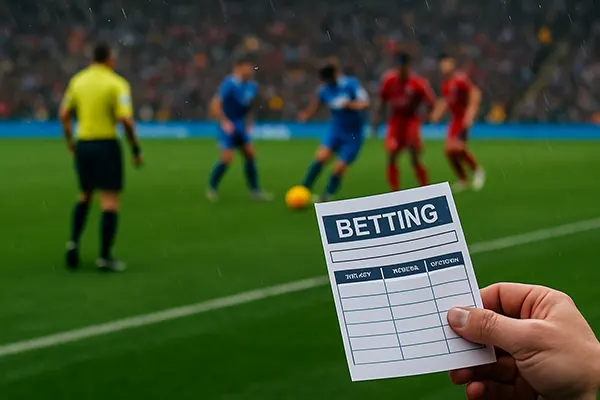
Live Betting: Managing In-Play Markets During Unforeseen Incidents
Live betting on sports events presents both exceptional opportunities and serious challenges. When matches take an unexpected turn – due to weather, injuries, or technical delays – punters and traders must act swiftly. Understanding how to navigate in-play markets during these incidents is crucial for successful outcomes and long-term strategy.
Understanding the Nature of In-Play Betting
In-play betting allows wagers to be placed while an event is ongoing. This dynamic form of betting enables real-time reactions to unfolding events, offering value not available in pre-match odds. However, its speed and unpredictability also require fast decision-making and a solid grasp of game dynamics.
Unlike pre-match betting, live markets are volatile. Odds change every second based on match events – from goals and red cards to momentum shifts. This constant fluctuation means punters must have both technical tools and betting literacy to keep up with the pace.
Market suspensions are common when critical incidents occur. These include player injuries, video assistant referee (VAR) reviews, or interruptions due to crowd trouble. Understanding the triggers behind suspensions and the mechanics of market reopening is key to managing risk effectively.
Common Types of Disruptions and Their Impact
Unforeseen incidents vary greatly in nature and frequency depending on the sport. In football, VAR reviews can lead to market holds of several minutes. In tennis, medical timeouts can halt markets and delay odds recalibration. Weather disruptions in cricket or motorsport often lead to more extended pauses or abandonment.
Such events disrupt the natural flow of data and bookmaker algorithms, leading to the re-evaluation of odds. Traders might remove certain betting options or widen margins to account for the increased uncertainty. Punters need to identify such periods and avoid impulsive decisions during these windows.
Ultimately, disruptions inject uncertainty into live markets. Being able to spot these disruptions early and knowing how bookmakers react helps maintain strategic integrity when betting live.
Adapting Strategy During Unexpected Incidents
Success in live betting depends on the ability to adapt. When unforeseen events occur, it’s essential to adjust both emotional responses and tactical decisions. Experienced bettors avoid knee-jerk reactions, instead reassessing value as the market reopens and recalibrates.
One effective approach is to focus on partial hedging or laying off bets when signs of instability arise. If a favourite’s match is interrupted while they’re leading, backing the underdog during the break may offer hedging potential, especially if momentum could shift due to psychological or tactical changes.
Another strategy involves diversifying bet types. Instead of solely focusing on the outcome market, consider goals, corners, or disciplinary statistics. These may be less affected by delays or stoppages and offer more control in volatile circumstances.
Psychological Resilience and Market Timing
Maintaining discipline during incidents is crucial. Betting emotionally – out of frustration or excitement – often leads to poor decisions. Train yourself to recognise when a market suspension isn’t an opportunity but a warning sign of unpredictable conditions.
Timing also matters. Avoid jumping back into the market immediately after it reopens. Odds may not accurately reflect reality, especially if the data feed lagged during the disruption. Waiting a few seconds for stability to return can make a significant difference.
Use downtime during interruptions to analyse game statistics, player form, or head-to-head records. This can improve your judgement once the game resumes and reduce reliance on instinct-based decisions.

Tools and Practices for Smart In-Play Betting
Utilising real-time data tools is a necessity for serious live betting. These tools help track possession, expected goals (xG), shot counts, and other metrics crucial for evaluating game state during disruptions. Many professional traders combine multiple data sources to filter out biases and misinformation.
Having accounts with multiple bookmakers also provides flexibility. Odds and markets vary between operators, especially after interruptions. Being able to compare and act quickly on the most favourable odds can significantly enhance expected value (EV).
Additionally, maintaining a clear record of your in-play bets, especially those made during disrupted events, is vital for post-match analysis. Understanding what worked and what didn’t helps develop a sustainable strategy rather than relying on luck.
Risk Management and Learning from Mistakes
Every disruption is a chance to learn. Post-incident analysis helps identify patterns – how a particular team or sport behaves under pressure, and how markets respond. This information sharpens instincts and builds long-term success.
Set clear limits on stake size and loss thresholds when betting live. The fast pace and unpredictability make emotional betting more likely, so predefined boundaries serve as a necessary safeguard.
Finally, remember that not betting is also a decision. Sitting out unstable markets often prevents losses. Patience, especially in high-risk scenarios, is a key trait of successful in-play betting.
Popular articles
-
 Asian handicap in sports betting
Asian handicap in sports bettingThe Asian Handicap is a type of betting used in …
-
 How Football Rule Changes in 2025 Are...
How Football Rule Changes in 2025 Are...The football landscape in 2025 is undergoing a profound transformation …
-
 Value in bets: what is it and how to ...
Value in bets: what is it and how to ...Value betting or value betting is a systematic approach to …
